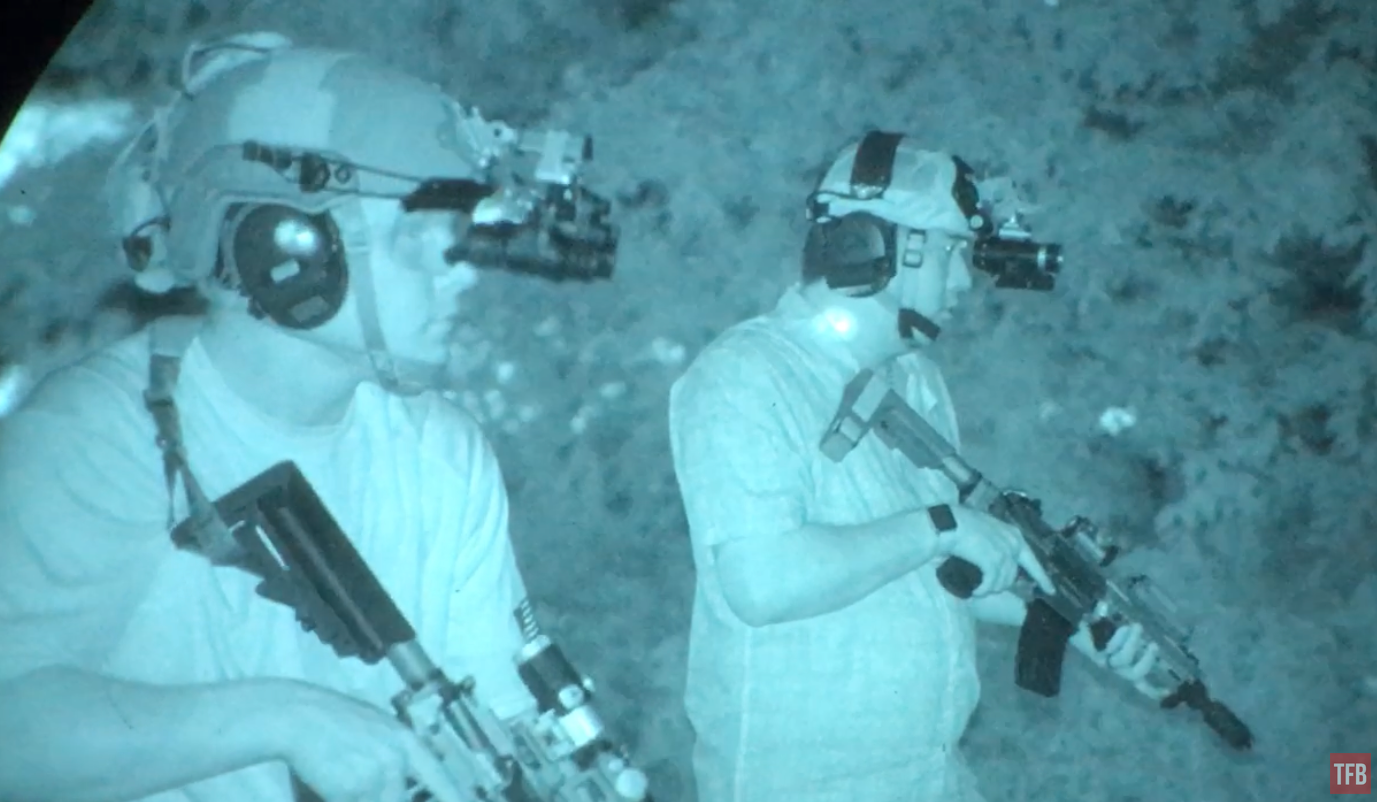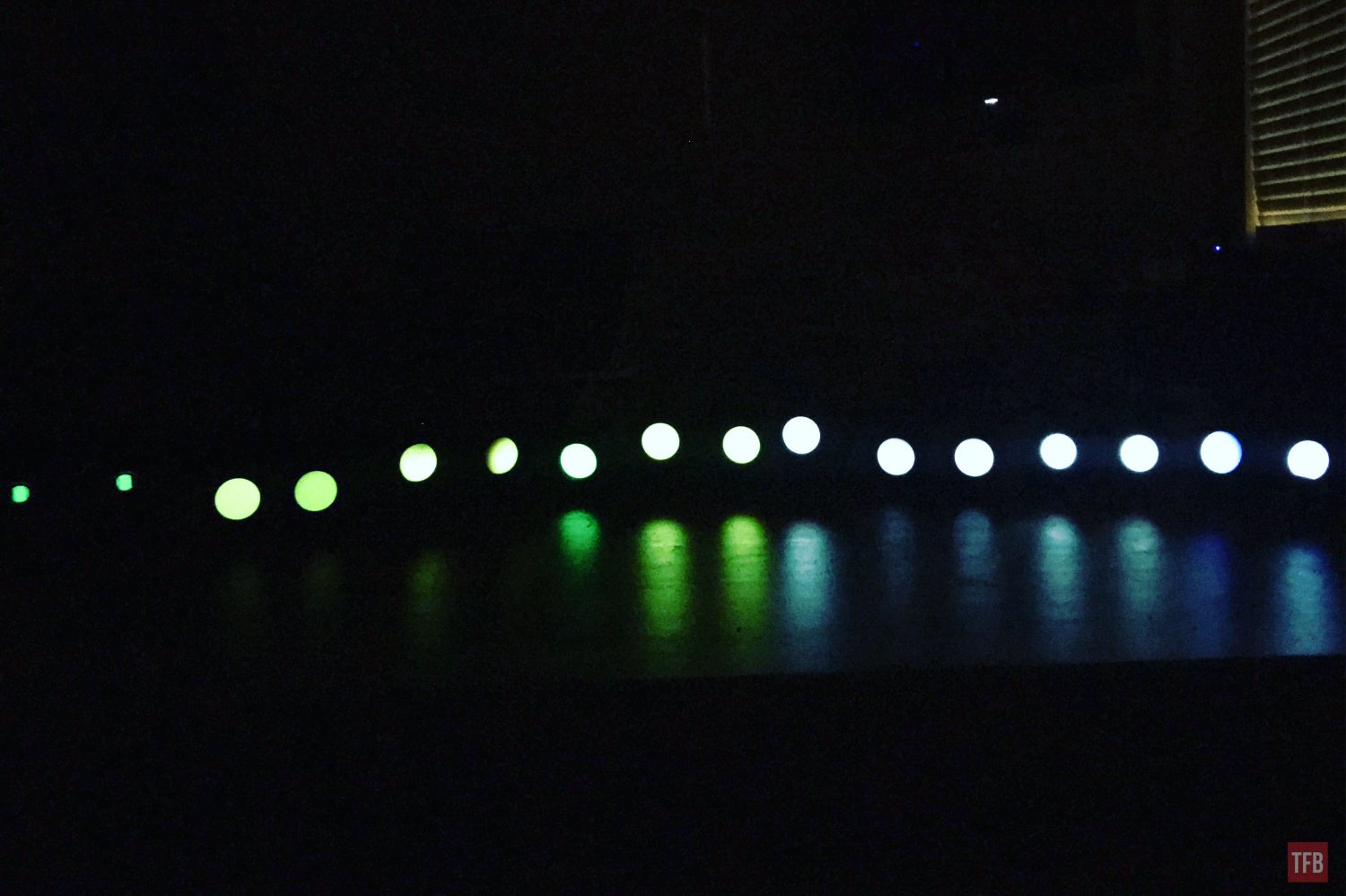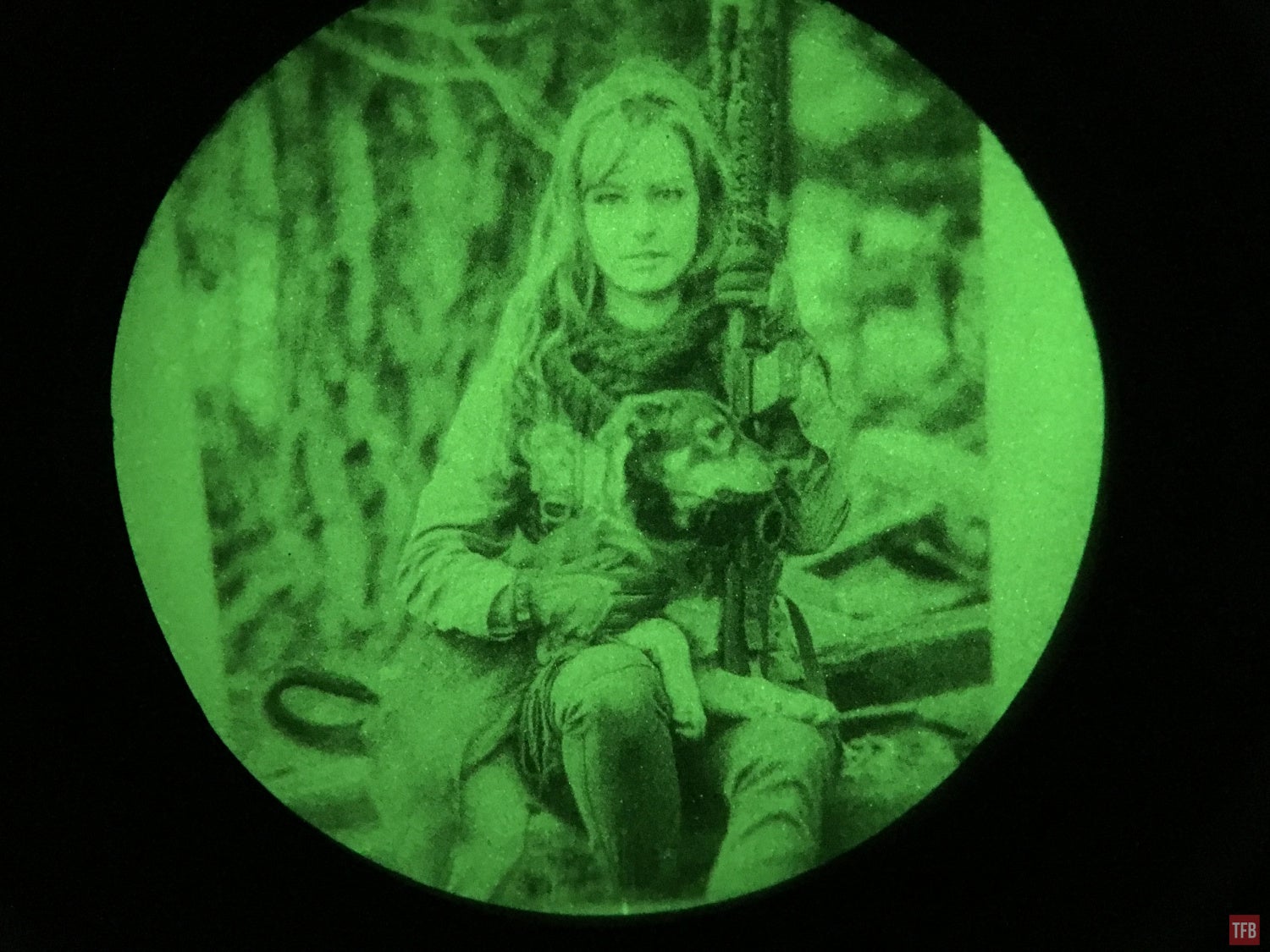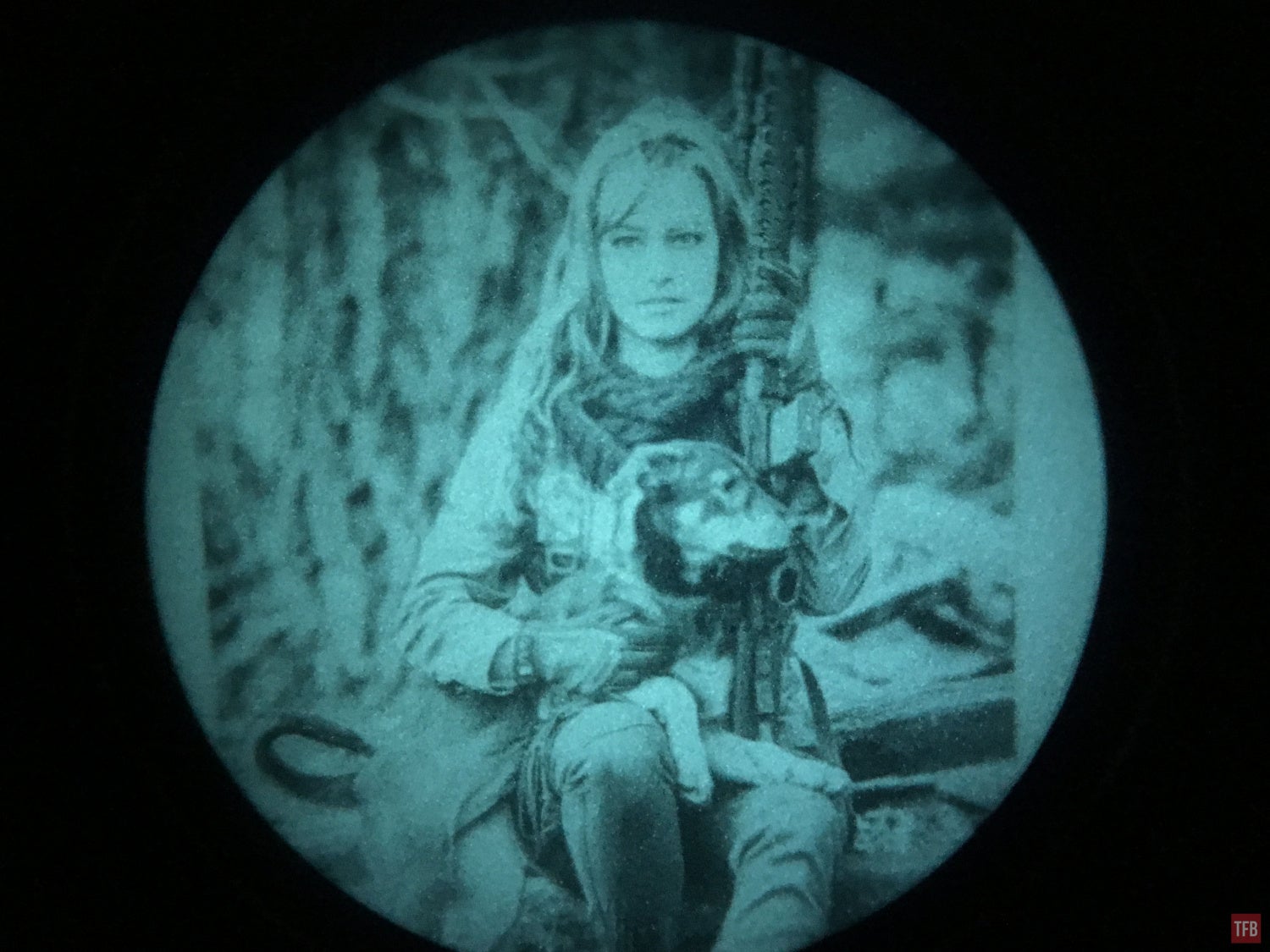This week on Friday Night Lights we will go back to basics. Last year I wrote “How to use Night Vision” so now we will talk about the benefits of one tube, two tube, green tube, white tube. Should you buy and use a monocular vs a binocular system? Should you get green phosphor or white phosphor?
What Should You Buy?
This is a question I get asked a lot. There are two schools of thought on this. Many people subscribe to the “Buy Once, Cry Once” mentality. If you are going to be spending a few thousand dollars on night vision or more, might as well buy the best thing you can afford. Even if it is outside your budget, save up to buy the best. I can understand this mentality however it is not the only way to get into night vision. Saving up to spend $10k for the best white phosphor dual tubes is certainly one way to go but is it the best? It’s like spending $4500 for a Staccato XC Duo. While it could be argued it is one of the best pistols, what does it do that a $500 Glock won’t do? Night Vision is like this as well. I rather see a proliferation of night vision and get more people into night vision. But even more important than just ownership of night vision is getting out there and using it. Same with firearms. Just owning a firearm is one step. But using it and using it well due to practice and experience is far more worthwhile than owning an expensive piece of hardware that does not get used often because it is so expensive and you ran out of money to do anything else.
One Tube Or Two Tubes?

Richard L. rocking two tube PVS-31 and Nicholas C. rocking one tube PVS-14
Should you get a PVS-14 or save up and get a pair of binocular night vision? Budget will dictate this of course. But there is nothing wrong with a monocular. In fact, there are benefits to using a monocular over a pair of binos. Using a monocular frees up your unaided eye to see and evaluate the environment you are in. Your unaided eye will be able to detect changes in lighting as well as see the color of lights at night. When looking through binos or quads, the image is monochromatic. If a red light turns on, you can’t tell it is red. It looks just like any other color of light. By having one eye unaided, you can also detect if a light in infrared because your unaided eye won’t be able to see the IR light but your aided eye with night vision will see a bright light. Another added benefit to a monocular is weight savings. A PVS-14 weighs around 11 ounces. Whereas a set of binos weighs almost twice that much. The other benefit to a PVS-14 is the cost. They can cost anywhere from $1,500 to $4,000. Bino NODs cost twice as much or more.

One tube is lighter than two tubes.
It sounds like a one tube monocular is better than two tube binos but there are some drawbacks. With a pair of binos, you are getting intensified images in both eyes. So you get 3D stereoscopic images. It is easier and more natural interacting in a three-dimensional environment with binos. It is just like having both eyes open versus closing one eye and trying to reach for things. It is harder since our brains are wired for binocular vision. Driving a car is easier with binos than a monocular.
You can get used to it with enough time and practice. Shooting with a red dot is better with binos for the most part. Optics like the RMR are not that great for night vision. The tint in the lens makes the RMR dark at night. Often you will have a difficult time seeing your optics to see the target through the RMR window if you use a monocular like the PVS-14. You can compensate for this by throwing more IR light downrange making it is easier to see your target in the RMR window while using NODs. But if you use binos then your other eye will fill in the rest of the image and allow you to see through the tinted window without using supplementary lighting. Just like shooting a red dot with both eyes open in the day time. There is a neat trick while using a monocular. If you have a red dot that is not NV compatible then you can simply use your unaided eye to look through the optic while your aided eye is not compromised by an occluded optic or the red dot brightness is too much for the device.
Green Tube Or White Tube?

This is another common question. Should I buy green phosphor or white phosphor? The color of the phosphor is a personal preference. There is a misconception that the color of the phosphor means the tube performs betters. That is not the case. It is like the color of a sports car has no bearing on its performance and yet there is that myth that the color of your car will affect your car insurance premiums. It is perception. Generally, white phosphor night vision is high performing and the ones people see are very very good. So they assume white phosphor means a better tube. What is really at play are the specs of the tubes. There are green phosphor tubes that are just as high performing as the “filminess white phosphor” tubes that everyone wants.

There are some aspects to each color palette that may help you decide beyond the specs of the tubes. Some people have problems with white phosphor. Unfortunately, this is a personal problem and nothing can be done about it and it is not a common problem. I know of one person that had to switch his white phosphor PVS-31s for green phosphor because he had difficulty seeing certain things in white phosphor but could see it with green phosphor.

Green phosphor seems dimmer than white phosphor simply because there are fewer wavelengths of light activating the cones of your eyes. Another aspect of the green phosphor is the starching of the green cones. When you look through green phosphor for an extended period of time and you take off the night vision, your natural eyesight will look pink. I do not experience this with white phosphor.
One serious consideration when choosing green or white phosphor is the price. Since white phosphor is in demand now, it is more expensive than green phosphor and the lead time to get them in is much longer than green phosphor tubes.
Not all white phosphors are equal. Often people on a budget look at Photonis Echo WP tubes. They are cheaper than the L3 WP tubes but they do not perform as well. Their white phosphor color tint is very blue whereas L3 and Elbit WP tubes are more pale greenish-blue. In some cases, they can look gray scale. Photonis tubes can be cheaper but the savings are not significant enough compared to Elbit WP tubes. You can get an Elbit WP tube for under $2k while L3 WP tubes start over $2k. If you were to pick between Elbit or Photonis, I would always recommend an Elbit tube since it is Gen 3.
What Should I Buy?
Hopefully, this article may help you decide. Your budget will of course dictate what you can afford. You can save up, trade/sell stuff you don’t need or use and get into night vision. It’s not cheap but it is a lot of fun. The most important thing is to use it. Having it and not using it is a waste. Being proficient with night vision takes practice. Especially when it comes to shooting and moving. Deciding to go with one tube or two tube binos is just a matter of priority. I rather someone buy an entry-level PVS-14 in green so they can afford to go out and shoot with it in the dark than spend all their money on the most expensive system but it never gets used. There is also the time spent saving up for the “buy once cry once” uber NODs. If you start off with something less expensive but useable then in the meantime you could be using your night vision sooner and enjoying it more. Night vision is modular. You can always upgrade down the road. If you start with a monocular, you can get another one and bridge them. Or transplant the glass and tubes into a bino housing. The important thing is to get into night vision sooner than later.
 Your Privacy Choices
Your Privacy Choices
